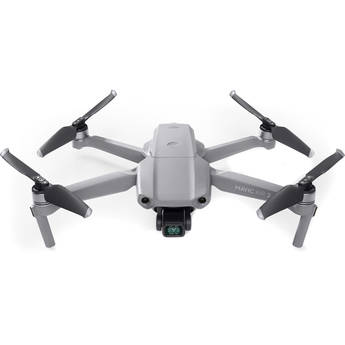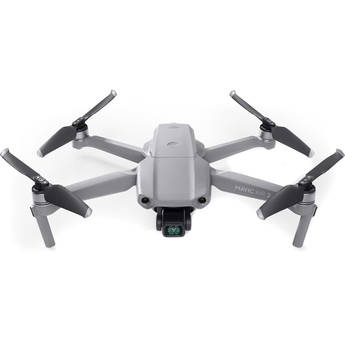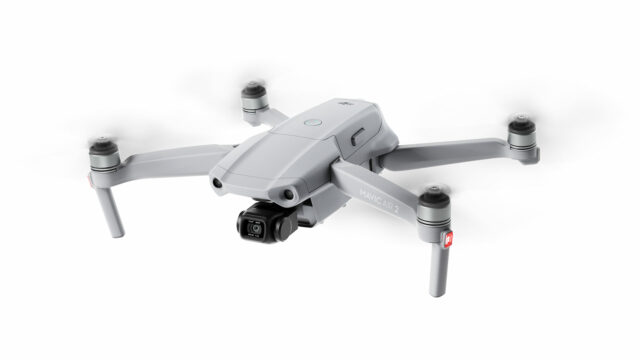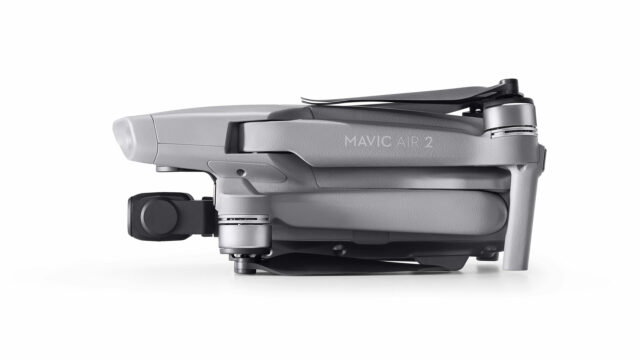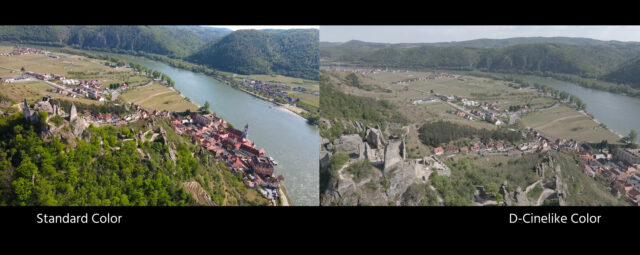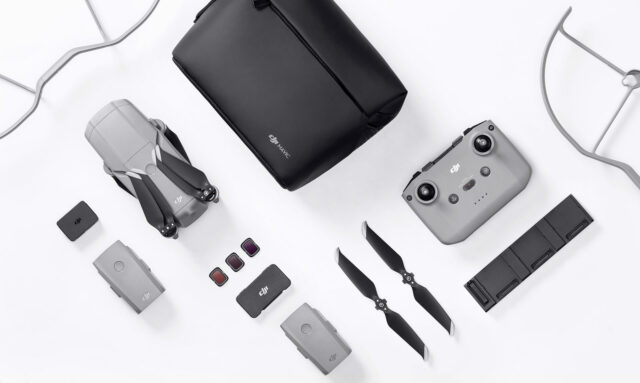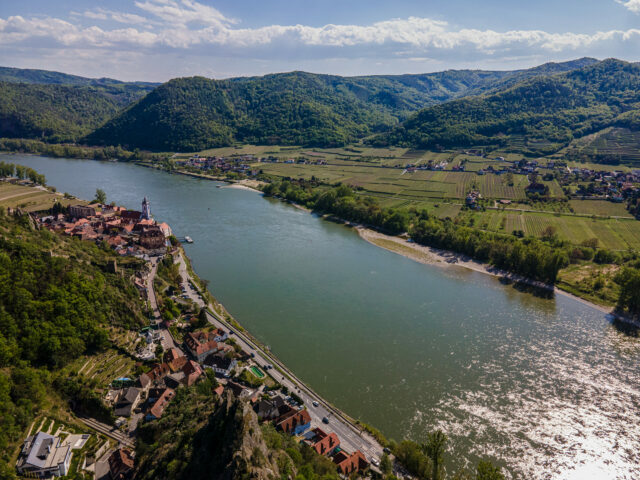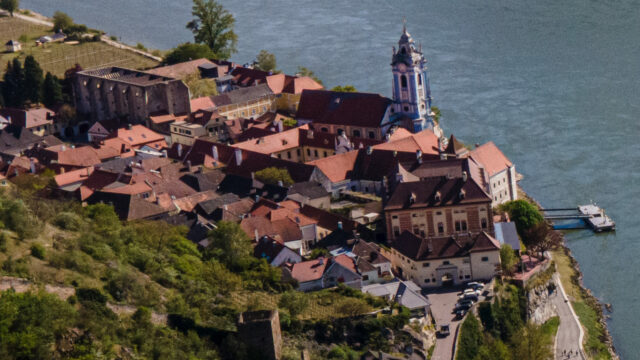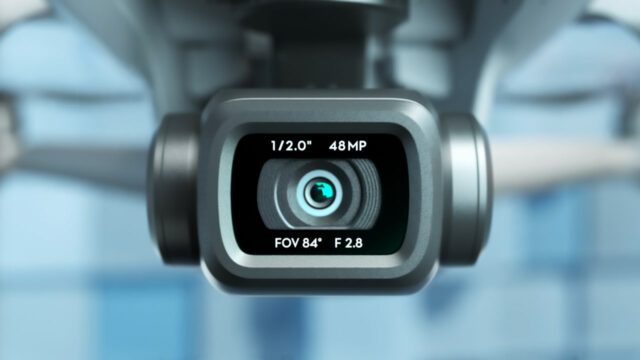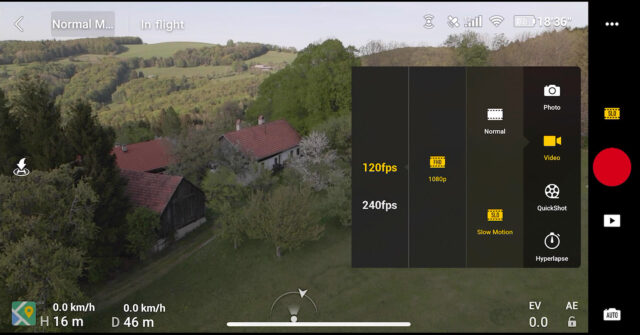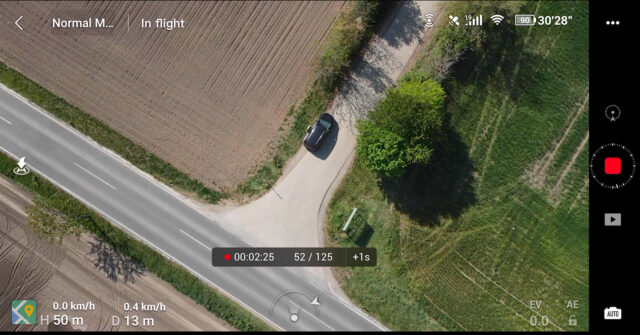DJI Mavic Air 2 Review & First Look – 4K 60p, 1080p 240fps
Music Courtesy of MusicVine.com Get 25% off your next music license with code C5D25 (valid for one use per customer)
DJI just announced the Mavic Air 2, its new generation of the popular consumer drone, which boasts 4K 60p video at 120Mbps and 1080p at up to 240fps slow motion, 48 Megapixel photos, 8K Hyperlapse function, a fly time of up to 34 minutes and enhanced autonomy features, and more. Let’s check it out!
Mavic Air … Two Years Ago
The original Mavic Air was launched over two years ago, and at the time, I flew it in Monaco at DJI’s launch event, and it offered video images with less compression than the more expensive Mavic Pro (Mark 1), in a much cheaper package.
Philip Bloom's Cinematic Masterclass
DJI Mavic Air 2 Announced – 4K 60p at 120Mbps
Fast forward two years, here we have the DJI Mavic Air 2, featuring a new 1/2″ sensor, and it’s the first Mavic drone able to shoot up to 4K in 60fps at 120 Mbps. That is better than the twice-as-expensive Mavic 2 Pro, which maxes out at 4K at 30fps and 100 Mbps.
In fact, it looks like a shrunken Mavic 2 Pro – DJI have clearly taken the design from the Pro and compressed it into the Mavic Air 2.
I took the Mavic Air 2 to the skies and from first impressions, those images in 4K and 60p look amazing indeed. Apart from the apparent use of slow motion from 4K in 50p or 60p, you will also get less jittery fast pans when working on a 50/60p timeline of course. D-Cinelike is also available for better color grading to have a “kind of” log image, though it’s still technically only an 8-bit image. The drone can also shoot HDR video at up to 4K 60p.
ND Filters part of “Fly More” Combo
Because of the fact that I had no fitting ND filters for the new camera designs for the test flights above yet, I had to use higher shutter speeds to get perfect exposure in manual mode, but that results in more jittery images. Having said that, just like the Mavic Mini, the Mavic Air 2 does a great job in Auto Exposure mode where you don’t actually see the shutter speed adjusting in changing lighting situations, so it can be used on occasion if no ND is available.
For the first time ever, DJI is including a set of ND filters with the “Fly More” combo which also gives you 3 batteries, a carrying case, a car charger and more.
48 Megapixel RAW photos in DNG, HDR Photos, Hyperlight
Compared to the original Air, the CMOS sensor is now bigger at 1/2 inch, and can shoot not only 12 Megapixel sensors, but also 48 Megapixel RAW photos in DNG format by using Quad Bayer technology. The resulting images are impressive for such a small sensor.
HDR photos are also available – the drone will take 7 different exposures of the same motive and combine them automatically into one.
A function called Hyperlight supposedly creates images with less noise in low-light scenarios by exposing multiple times and then computing and merging them into one image, reducing noise.
For enthusiasts, there is now also a Scene Recognition feature for photos which will recognise 5 different kinds of scenes, and optimize the photo settings for those: for example sunsets, grass, snow, blue skies and trees.
OcuSync 2.0 Transmission Instead of Extended WiFi
One of the downsides of the original Mavic Air was the image transmission technology between the drone and the controller. They used extended WIFI, which is not nearly as good in reach and responsiveness as DJI’s proper image transmission OcuSync.
The Mavic Air 2 luckily has OcuSync 2.0, and I can confirm it’s now just as easy and responsive to maneuver as the Pro series drones. The reach is up to 10 kilometers, but that is unrealistic because you are supposed to always keep the drone in your line of sight when flying. OcuSync uses two frequency bands on the Mavic Air 2 and switches automatically to the best signal.
The Air 2 also comes with a newly designed more ergonomic controller which mounts the phone on top, which I found much more comfortable to use than the older designs. Its battery capacity is also much increased, which was a problem on the older controllers. It is a bit more bulky but I think the downside of having a little more to carry is outweighed by the fact that it is now much better to hold and that it will last longer on a full charge.
Super Slow Motion at 120fps and 240fps in HD
I am not actually sure why it’s important in a drone, but the Mavic Air 2 can also shoot up to 240 fps slow motion in 1080p resolution. This is definitely something to explore creatively, and it’s of course perfect for fast-moving sports scenes like surfing, for example. The quality is quite noticeably lower when shooting in this mode, but we know this from all kinds of other cameras when high speed recording is enabled, as the same data rate has to be divided among a lot more frames.
Hyperlapse 8K – a Moving Timelapse, Quick Shots & Smart Photo
Hyperlapse 8K is a new mode that allows for pre-programmed moving timelapses, which essentially stitches a number of photos into a video. Flight paths can be predefined, or the drone can also go in a circle around an object, for example.
For fun and hobby drone pilots, the Mavic Air 2 of course also has the Quick Shot functions which we know from their other drones in the Mavic series, plus a new mode called SmartPhoto which automatically recognizes the kind of scene you are in, to automatically adjust the settings to the circumstances.
Flight Time: Up to 34 Minutes on 1 Battery
DJI claims a maximum flight time of 34 minutes which I wasn’t able to verify due to the windy situation I was flying in, where batteries drain much faster. But in any case, the flight time is more than sufficient. I still recommend buying the Fly More package of the drone which gives you three batteries in total.
Improved Intelligent Functions
The Mavic Air 2 also features improved autonomous flying modes that allow for better obstacle avoidance and object tracking. DJI claims that their Focus Track system on the Mavic Air 2 is the most advanced tracking system in any of their drones. It includes these three modes:
Active Track 3.0: Better mapping and much improved obstacle avoidance (that I have yet to test). DJI was very confident in this improved feature, it’s also supposed to recognize a subject again if it briefly gets lost behind trees (which was a standard problem with the earlier version of this).
Point of Interest 3.0: With this you can set a flight path around a subject – now it includes surface recognition to dynamically track subjects.
Spotlight 2.0: This is the first time in a Mavic series drone – Spotlight locks a subject in frame while the user has free operation of the drone’s movements.
Full Tech Specifications of the DJI Mavic Air 2
| Aircraft | Weight | 570 g |
| Size | Folded: 180×97×84 mm (Length×Width×Height) Unfolded:183×253×77 mm (Length×Width×Height) | |
| Diagonal Distance | 302 mm | |
| Max Ascent Speed | 4 m/s (S Mode), 4 m/s (N Mode) | |
| Max Descent Speed | 3 m/s (S Mode), 3 m/s (N Mode), 5 m/s (S Mode during a sharp descent) 3 m/s (all modes at elevations over 4500 m) | |
| Max Service Ceiling Above Sea Level | 5000 m | |
| Max Flight Time (without wind) | 34 minutes | |
| Max Hover Time (without wind) | 33 minutes | |
| Max Flight Distance | 18.5 km | |
| Max Horizontal Flight Speed | 19 m/s (S Mode) 12 m/s (N Mode) 5 m/s (T Mode) | |
| Max Wind Resistance | 8.5-10.5 m/s (Level 5) | |
| Max Tilt Angle | 35°(S Mode), 20°(N Mode)* * 35° under heavy winds | |
| Max Angular Velocity | 250°/s (S Mode), 250°/s (N Mode) | |
| Operating Temperature Range | -10° to 40°C (14° to 104°F) | |
| Operating Frequency | 2.400-2.4835 GHz, 5.725-5.850 GHz | |
| Transmitter Power (EIRP) | 2.400-2.4835 GHz: FCC: ≤26 dBmCE: ≤20 dBmSRRC: ≤20 dBm MIC: ≤20 dBm5.725-5.850 GHz: FCC: ≤26 dBmCE: ≤14 dBmSRRC: ≤26 dBm | |
| Hovering Accuracy Range | Vertical: ±0.1 m (with vision positioning) ±0.1 m (with vision positioning) | |
| Propellers | Quick release, low noise, folding | |
| Satellite Systems | GPS+GLONASS | |
| Compass | Single Compass | |
| IMU | Single IMU | |
| Internal Storage | 8 GB | |
| Battery | Capacity | 3500 mAh |
| Voltage | 11.55 V | |
| Charging Voltage Limit | 13.2 V | |
| Battery Type | LiPo 3S | |
| Energy | 40.42 Wh | |
| Weight | 198 g | |
| Charging Temperature | 5° to 40°C (41° to 104°F) | |
| Max Charging Power | 38 W | |
| Camera | Sensor | 1/2″ CMOS, Effective Pixels: 12 MP and 48 MP |
| Lens | FOV: 84° Equivalent Focal Length: 24 mm Aperture: f/2.8 Focus Range: 1 m to ∞ | |
| ISO | Video: 100-6400 Photo (12 MP): 100-3200 (Auto) 100-6400 (Manual) Photo (48 MP): 100-1600 (Auto) 100-3200 (Manual) | |
| Max Photo Resolution | 48 MP 8000×6000 pixel | |
| Photo Modes | Single: 12 MP and 48 MP Burst: 12 MP, 3/5/7 frames Automatic Exposure Bracketing (AEB): 12MP, 3/5 Frames at 0.7EV Bias Timed: 12 MP 2/3/5/7/10/15/20/30/60 seconds SmartPhoto: Scene Recognition, HyperLight, and HDR HDR Panorama: Vertical (3×1): 3328×8000 pixels (Width×Height) Wide (3×3): 8000×6144 pixels (Width×Height) 180° Panorama (3×7): 8192×3500 pixels (Width×Height) Sphere (3×8+1): 8192×4096 pixels (Width×Height) | |
| Photo Formats | JPEG/DNG (RAW) | |
| Video Resolution and Frame Rates | 4K Ultra HD: 3840×2160 24/25/30/48/50/60 fps 2.7K: 2688×1512 24/25/30/48/50/60 fps FHD: 1920×1080 24/25/30/48/50/60/120/240 fps 4K Ultra HD HDR: 3840×2160 24/25/30 fps 2.7K HDR: 2688×1512 24/25/30 fps FHD HDR: 1920×1080 24/25/30 fps | |
| Color Profiles | D-Cinelike, Normal | |
| Video Formats | MP4/MOV (H.264/MPEG-4 AVC, H.265/HEVC) | |
| Max Bitrate | 120 Mbps | |
| Supported SD Cards | Supports a microSD with capacity of up to 256 GB | |
| Supported File Systems | FAT32 and exFAT | |
| Zoom | Not available | |
| Gimbal | Stabilization | 3-axis (tilt, roll, pan) |
| Mechanical Range | Tilt: -135° to 45° Roll: -45° to 45° Pan: -100° to 100° | |
| Controllable Range | Tilt: -90° to 0°(Default) -90° to 24°(Extended) | |
| Max Controllable Speed (tilt) | 100°/s | |
| Angular Vibration Range | ±0.01° | |
| Vision System | Forward | Precision Measurement Range: 0.35-22.0 m Detection Range: 0.35 to 44 m Effective Sensing Speed: 12 m/s Field of View (FOV): 71° (horizontal), 56° (vertical) |
| Backward | Precision Measurement Range: 0.37-23.6 m Detection Range: 0.37-47.2 m Effective Sensing Speed: 12 m/s Field of View (FOV): 44° (horizontal), 57° (vertical) | |
| Available Downward Sensors | Dual Vision Sensors + Time of Flight Sensors (ToF) | |
| Downward | ToF Measurement Range: 0.1-8 m Hovering Range: 0.5-30 m Vision Sensor Hovering Range: 0.5-60 m | |
| Left/Right | None | |
| Downward Auxillary Light | Single LED | |
| Safety | Obstacle Avoidance System | Advanced Pilot Assistance Systems (APAS) 3.0 |
| Video Transmission | Transmission System | OcuSync 2.0 2.4 GHz/5.8 GHz Auto-Switching |
| Max Transmission Distance | 10 km (FCC), 6 km (CE), 6 km (SRRC), 6 km (MIC) | |
| Live View Quality | 720p@30fps/ 1080@p30fps | |
| Latency (depending on environmental conditions and mobile device) | 120-130 ms | |
| Video Transmission Encoding format | H.265 | |
| Max Live View Bitrate | 40 Mbps | |
| Operating Frequency | 2.400-2.4835 GHz 5.725-5.850 GHz | |
| Remote Controller | Remote Controller Transmission System | OcuSync 2.0 |
| Supported Mobile Device Connectors | Lightning, Micro USB, USB Type-C | |
| Max. Supported Mobile Device Size | 180×86×10 mm (Height×Width×Thickness) | |
| Operating Temperature | -10° to 40°C (14° to 104°F) | |
| Transmitter Power (EIRP) | 2.400-2.4835 GHz: FCC: ≤26 dBm CE: ≤20 dBm SRRC: ≤20 dBm MIC: ≤20 dBm 5.725-5.850 GHz: FCC: ≤26 dBm CE: ≤14 dBm SRRC: ≤26 dBm | |
| Operating Current/Voltage | 1200 mA@3.7V (Android) 700 mA@ 3.7 V (iOS) | |
| Charger | Charging Input | 100-240 V, 50/60 Hz, 1.3 A |
| Charging Output | Charging Port: 13.2 V⎓2.82 A USB Port: 5 V⎓2 A | |
| Voltage | 13.2 V | |
| Rated Power | 38 W |
Conclusion
From this first look at the Mavic Air 2, I can say that this is definitely a worth smaller brother to the Mavic 2 Pro and Mavic 2 Zoom. At about 800 dollars, it costs half of what the Pro costs and gives you video quality that is in some ways even better despite the smaller sensor, because of the better compression. And the biggest problem of the original Mavic Air – the Wifi transmission – has been solved by implementing a much more robust wireless transmission.
DJI proves again that they don’t shy away pushing innovation with every new drone, even if that means that this could somewhat cannibalize their existing drones. I’m looking forward to testing the Mavic Air 2 and all its functions even more, and I am almost fearing that in terms of technology, it will be better in some ways than my Mavic 2 Pro, for which I paid twice the price …
Get the DJI Mavic Air 2 at B&H (Buy links below), or, at DJI Store by clicking here.
What do you think about the Mavic Air 2? Is this the drone you have been waiting for? Let us know in the comments below.
